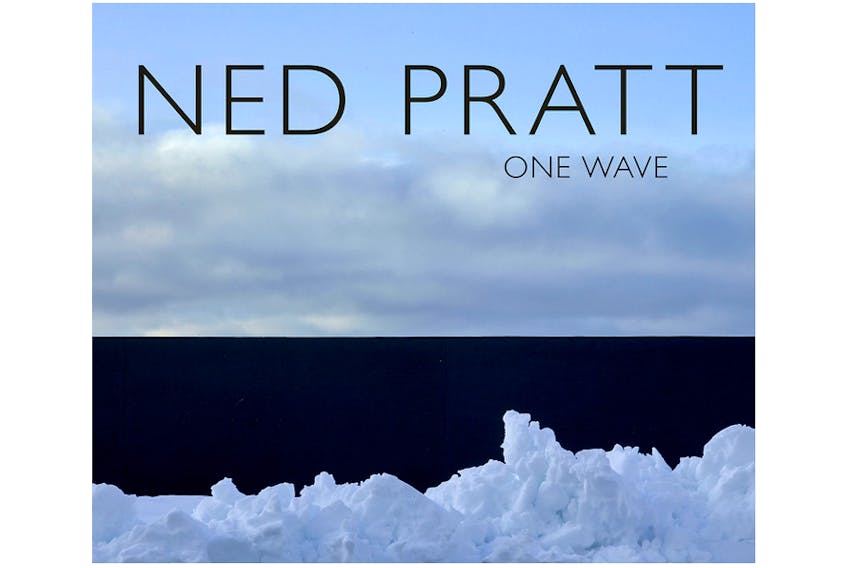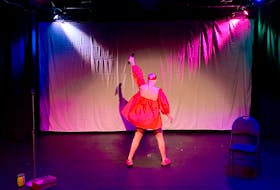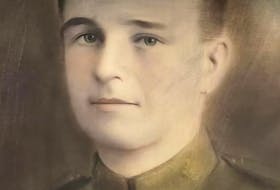Ned Pratt: One Wave
Goose Lane Editions| The Rooms
$45.00 160 pages
“One Wave” is a companion volume to Ned Pratt’s exhibitions of chromogenic prints (big full-colour photographs) currently at The Rooms and Christina Parker Gallery. But don’t think of it as a catalogue. With four essays, and an introduction from Pratt, as well of dollops of his remarkable pictures, “One Wave” is a standalone artbook the equal of any coffee table.
The chapters are analytical and biographical. As a child Pratt was attracted to the abstract art of Piet Mondrian and Marc Chagall. “Then, of course, there are my mother and father.” Both Mary and Christopher Pratt are usually categorized as realists; luminous, hyper-detailed ones. But Pratt rejects that critical labelling, and contends they are, in fact, abstract.
It’s an intriguing reasoning, as abstract art is by definition non-representational, which none of the Pratts (including Barbara) can be accused of. But what Pratt argues is it is the scale of scrutiny and consideration that makes the work abstract. The focus is so tight and intimate it renders the forms beyond representational.
Built from ‘the ‘dregs’
Pratt also contends he builds his work from “the ’dregs’”; this is not intended as a derogatory term but indicating “the things around us that others didn’t seem to see or take seriously.” Like guardrails. Or the metal hull of a ferry. Or light poles. And sheds. Lots of sheds.
Pratt’s configurations are all straightforward balance. There are rarely more than four components (ice, water, cloud, sky) and the colours are natural. “My work relies on composition. It is like a game to me, finding that one position that brings a series of complete, unrelated shapes into one unified observation.”
En route, he’s seeking tension, and “a quiet stability,” which aren’t incompatible but counter-punctual and lead to a completeness.
Mirielle Eagan, Curator of Contemporary Art at The Rooms, interviews Pratt and asks, among other things, about this technique, “consciously breaking the compositional rules of photography to make the viewer aware that the photograph is an object and confront the viewer with the awareness of themselves looking at the photograph.” Pratt agrees while clarifying that he keeps that confrontation low key, adding a good title for his exhibition could be “Ned Pratt: Not Prone to Violence.”
In “Capturing the Elusive Instant,” Sarah Fillmore, Chief Curator with the Art Gallery of Nova Scotia, traces Pratt’s influences, from his studies of art history and architecture, through his absorption with artists like André Kertész and Lee Friedlander, and his work with the ground-breaking and now-defunct St. John’s newspaper the “Sunday Express.”
Newspaper work
“Working at the newspaper taught me what I like and don’t like about photography. It made me believe that I had a responsibility for the images I made.” For the newspaper he mostly photographed people, but as an independent artist he rarely shows portraiture, preferring a scenic modernistic formalism: “Pratt finds a focus in the shape of things.” Fillmore also broadens comparisons to contemporary photographers, for example Cora Cluett, and their practices of “framing.”
In N.S. writer and curator Ray Cronin’s “Between Sea and Sky,” Pratt’s landscapes are set within the bare essential elements of Newfoundland. “Pratt’s work is usually undertaken in series — themes, perhaps, is a more accurate description — that show his engagement with a particular strain of thought … Always, though, there is the sky.” Also present are voids, geometry, viewpoint. “In Ned Pratt’s images, Newfoundland is not only a rock between hard places, but also that philosophical daydream of home …”
Location, location, location
Johnathan Shaughnessy of the National Gallery of Canada provides the concluding piece, “Something Big, Something Small,” which is about location: the positioning of roads, distances, edges. “All is trickier than it seems in a Ned Pratt photograph for the simple reason that there are very few tricks to it.” He doesn’t extensively edit his photographs. “I’ll crop, and I’ll fix parallax, because sometimes you just can’t physically get in the right spot.”
Pratt’s genre is all about working in N.L., and he says he wouldn’t be able to take pictures anywhere else. He needs to visit places he knows well. He has to be taking them in for the umpteenth time. It has to do with his ongoing visual narrative. “The more you go to a place, the more you see,” he tells Egan. “If I were to go and work in China, for instance, and apply my approach to things, then it would just be an approach. There would be no history there for me.”
This just skims the richness of the dialogue and interchanges.
“One Wave” is jam-packed with insight. And it’s all illustrated with Pratt’s wonderful imagery, with most pieces given a full page. And the book overall is nicely designed, with its rectangular format, hard cover, textured pages, and full-colour reproductions.
Joan Sullivan is editor of Newfoundland Quarterly magazine. She reviews both fiction and non-fiction for The Telegram.









